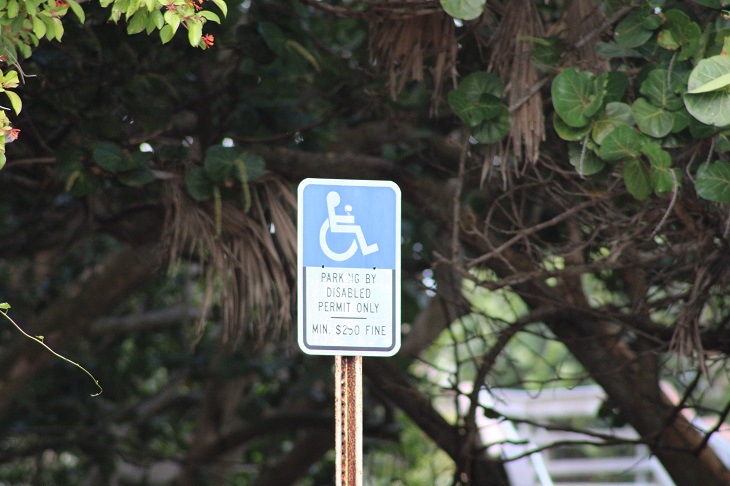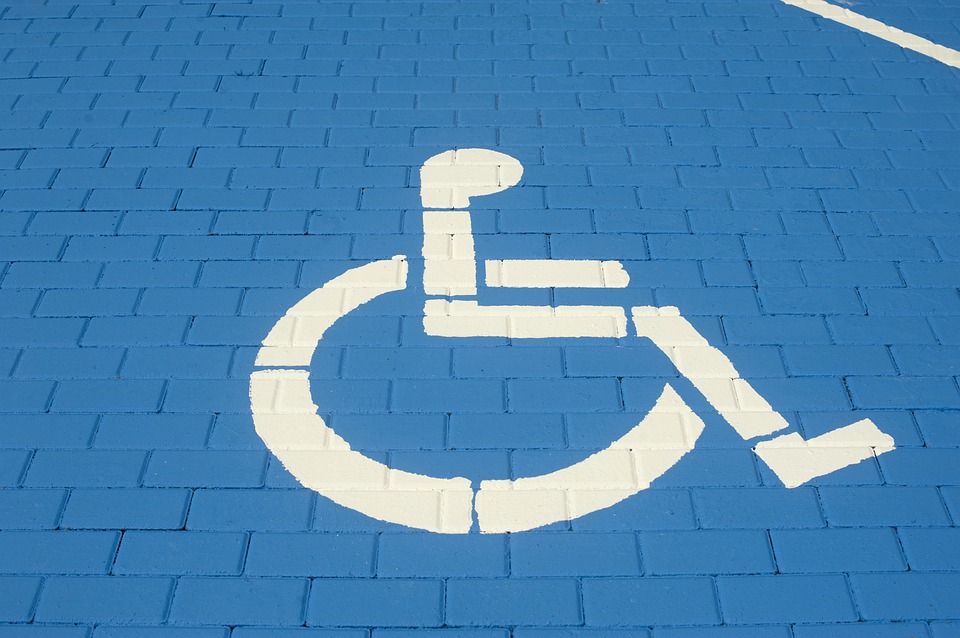Let’s talk about the process of getting a handicap parking permit in Alabama. Read on for all you need to know, including which qualifying conditions entitle a person to get an Alabama disabled parking permit, what types of permits are available in Alabama, and all the application requirements.
How Do You Qualify For Handicap Parking In Alabama?
To qualify for handicap parking in Alabama, you must hold a valid handicap parking permit. Residents of Alabama can get a permit issued by the Alabama Department of Revenue Motor Vehicles Division.
People who hold disabled parking permits from the following jurisdictions also qualify to use handicap parking in Alabama:
- All other US states
- All US overseas territories
- Canada
- Mexico
- EU
- UK
- Australia
- New Zealand
- Japan
Qualifying Conditions For A Handicap Parking Permit In Alabama
So, what qualifies you for a handicap placard in Alabama? The following disabilities qualify a person to get a disabled parking permit in Alabama:
- An inability to walk 200 feet without stopping to rest
- An inability to walk without the use of a walking assistance device
- A cardiac condition that is classified in severity as Class III or Class IV by the American Heart Association
- An orthopedic, arthritic, or neurological condition that limits mobility
- Lung disease to the extent that forced respiratory expiratory volume for one second, when measured by spirometry, is less than one liter, or arterial oxygen tension is less than 60 mm/hg on room air at rest
- Portable oxygen tank usage

What Types Of Disabled Parking Permits Are Available In Alabama?
The following types of disabled parking permits are available in Alabama:
- Long-term disabled parking placards
- Long-term disabled parking license plates
- Temporary disabled parking placards
- Organizational disabled parking plates
How Long Are Alabama Disabled Parking Permits Valid?
Long-term Alabama disabled parking placards and plates are valid for five years. Temporary disabled parking placards are valid for six months. Organizational disabled parking plates are valid for five years.
Who Can Verify An Application For A Disabled Parking Permit in Alabama?
Only an Alabama state-licensed physician can verify an application for an Alabama disabled parking permit. You can have a consultation with an Alabama state-licensed physician at the Dr. Handicap online clinic.
Alabama Handicap Placard Requirements
Alabama handicap parking placards must be clearly displayed hanging from the rearview mirror when a vehicle is parked in a disabled space in Alabama. When a vehicle is moving, handicap placards must be safely stowed in a place where they do not interfere with the driver’s ability to operate the vehicle safely.
How Do You Get A Handicap Tag In Alabama?
To get a handicap tag in Alabama, you must have a consultation with an Alabama state-licensed physician who will verify your disability. This can be done remotely by signing up to the Dr. Handicap online clinic. Once your disability has been verified, the physician will sign your application form, which you will then complete and submit to your local County Licensing Office.
How Do You Replace A Disabled Parking Permit in Alabama?
You need to renew your Alabama disabled parking permit once it expires. To renew your permit, submit an application form to your local County Licensing Office.
When renewing a temporary disabled parking placard, you will need to get your application signed by an Alabama state-licensed physician. Long-term disabled permit holders can self-certify their disability when renewing.
Is Disabled Parking Free In Alabama?
Disabled parking permit holders can park in any designated disabled parking space in Alabama for free.
Alabama Disabled Parking Infrastructure
Alabama is well-stocked with ADA-compliant disabled parking infrastructure. Disabled parking spaces in Alabama are signposted with a sign that sits at least five feet off the ground and displays the International Symbol of Accessibility.
Can You Park Free At A Meter With An Alabama Disabled Parking Permit?
Disabled parking permit holders cannot park in metered, on-street spaces for free in Alabama. Even if you display a permit, you’ll need to pay to park in these spaces.
Featured image by Zach Farmer on Unsplash








